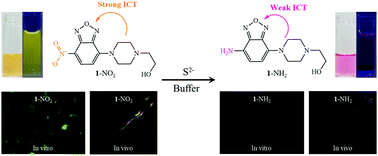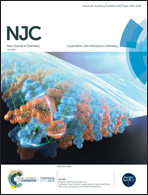A dual-response sensor based on NBD for the highly selective determination of sulfide in living cells and zebrafish†
Abstract
A dual chemosensor, 1-NO2, based on the combination of 4-chloro-7-nitrobenzofurazan (NBD) and 1-(2-hydroxyethyl)piperazine, was applied for the detection of sulfide. Chemosensor 1-NO2 could detect sulfide through fluorescence turn-off and color change from orange to pink-red. The sensing mechanism and structure of 1-NO2 with S2− were demonstrated using Job's plot, ESI-MS analysis and theoretical calculations. In addition, 1-NO2 as a sulfide detector could be used in living organisms (HeLa cells and zebrafish).



 Please wait while we load your content...
Please wait while we load your content...